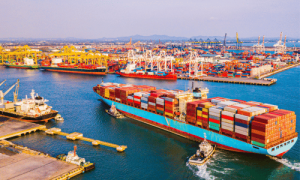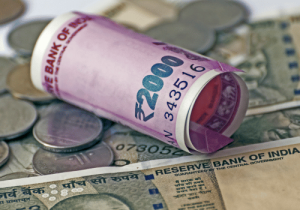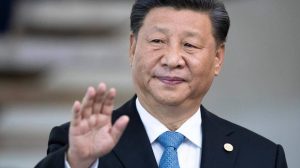Optimism in ASEAN’s economic prospects has never been higher. 46% of decision-makers are optimistic about the global economy, with many of them are looking at ASEAN for emerging opportunities.
As the global pandemic gathered pace in 2020, the prospects for Association of Southeast Asian Nations (ASEAN) economies looked bleak. With businesses shuttered and global supply chains coming under increasing strain, flows of investment into the region seemed certain to falter.
Southeast Asia’s economies have indeed stuttered, after being among the world’s fastest-growing before Covid-19. According to HSBC economists, countries such as the Philippines and Thailand will not return to pre-crisis GDP levels until the end of 2022, at the earliest.
Despite this, investor optimism in the region’s economic prospects has never been higher.
Globally, investors are excited. According to the latest Bloomberg study of foreign direct investment (FDI), around 46% of decision-makers are optimistic about the global economy, higher than before the pandemic14. Many of them are looking at ASEAN for emerging opportunities.
“As a bloc, Southeast Asia has 660 million people, making it the third-largest collective consumer base in the world, after China and India,” said Joseph Incalcaterra, Director, Chief ASEAN Economist, Asia Pacific, HSBC. “The region has agreed several trade deals in recent years, opening up this market to enormous investment potential, yet many of Southeast Asia’s people remain outside the formal financial and commercial system, representing what many investors see as a future untapped opportunity as the region becomes more prosperous.”
As a bloc, Southeast Asia has 660 million people, making it the third-largest collective consumer base in the world, after China and India.
A Temporary Blip
Developing countries in Asia recorded the world’s only foreign investment growth in 2020, accounting for more than half of global flows, according to UNCTAD’s World Investment Report 2021.1 And even though FDI into Southeast Asia itself contracted sharply by 25%, the region’s share of global FDI grew from 11.9% in 2019 to 13.7% in 2020.
The contraction was a temporary blip. Inflows have quickly resurged. Inflows of foreign investment into East and Southeast Asia accelerated 25% in 1H21,2 and the region is once again the focus of global investor attention, affirming UNCTAD’s view of ASEAN as “the engine of global FDI growth for the past decade.”
In the first half of 2021, US$101.6 billion worth of deals took place,3 fueled by megadeals in the tech, media and telecom sectors involving companies that have become household names across the region, such as Grab and Gojek. The resurgence in those six months was such that it beat all previous annual totals.
Much of the excitement surrounds the explosive growth of the region’s digital economy. ASEAN countries already embraced digital lifestyles with enthusiasm; the pandemic supercharged this transformation, triggering what a combined 2020 report by Bain, Temasek and Google described as a “permanent and massive digital adoption spurt”.
About 40 million Internet users went online for the first time in 2020, bringing the regional total to 400 million.4 One-in-three consumers of digital services last year were newcomers, and 90% of those new users will continue using digital services, the survey found.
E-commerce boomed. The region added 70 million new online shoppers during the pandemic, and net spend is forecast to surge from $283 per person in 2020 to $381 in 2021 and continue growing at about 14% a year.5
A Coming Boom
Accordingly, Southeast Asia is fast becoming a hotbed of unicorns, many of them in the tech sector, that are drawing the attention of investors. From Indonesia’s Akulaku to Singapore’s Advance Intelligence Group and Mynt in the Philippines, once-rare valuations north of a billion dollars are slowly becoming more common, and most of the world’s largest data centre and cloud multinationals are setting up or already operating data centres in the region in anticipation of the coming boom.
The region has also become China’s largest trading partner, overtaking the European Union in 2020,6 as well an integral supply-chain centre for companies diversifying manufacturing beyond China. Trade with the United States and EU accounts for almost one-fifth of ASEAN exports, while trade within the region is also thriving. The signing of the Regional Comprehensive Economic Partnership in 2020 is expected to bolster FDI and economic integration.
As ASEAN countries grows wealthier, ancillary opportunities are emerging. Healthcare expenditures, for instance, are forecast to rise 75% from 2020 to reach $740 billion in 2025.7 Underlying that growth are an ageing population—over one-fifth of people in the region will be over 60 by 2050—and the prevalence of non-communicable diseases. While some countries in the region already have booming medical tourism sectors, the broad growth in affluence will drive the development of local healthcare services, too.
The pandemic, coupled with high mobile penetration rates and low levels of local healthcare, are creating substantial opportunities for investment in online and private health services. Health and medical technologies—digital solutions especially—can provide cost-effective and high-quality treatment options. Delivering and scaling those solutions requires investment.
Education also offers new growth opportunities. While ASEAN has made dramatic improvements in primary education rates over the past decade,8 many less fortunate people have been left behind. And enrolment rates in tertiary education lag those of more developed countries and regions like Europe and the U.S.9 The pandemic underscored opportunities to close the gaps through the intersection of education and technology amid increasing connectivity.
Success won’t come easy. Although there are pockets of EdTech innovation across the region, this varies significantly, and typically serves a more affluent consumer. Investment in infrastructure such as devices, connectivity, electricity in schools is important. But it should form part of a wider strategy for how technology will be used effectively to improve learning outcomes.10 Getting that right would prove beneficial for learners and profitable for investors.
One private equity investor recently suggested that ASEAN is on course to see its first EdTech unicorn as the demand for quality online education increases.11 Indonesian EdTech start-up Ruangguru is one of many promising examples. It boasts over 22 million users, recently secured $50 million worth of investment from Tiger Global,12 and has garnered high levels of investment.13 Therein lie opportunities.
The Resilience Factor
According to Bloomberg’s FDI study, foreign companies invest in ASEAN for three principal reasons: commercial expansion (74%), tech capabilities (70%) and cost savings (70%). But there are deeper reasons as well.
Resilience has become one of the watchwords of pandemic economics, and for investors searching for global opportunities, priorities have shifted. Now, 85% of investors say the ability to respond to emergencies is a vital component of their decisions, according to the Bloomberg FDI survey, while 83% consider healthcare infrastructure crucial.
The bottom line is no longer just the bottom line. Investors want to commit their capital to countries that have emerged from the pandemic stronger, and know that in the event of another emergency, economies are nimble enough to withstand the strain. So far, investors have given most ASEAN economies a vote of confidence.




















